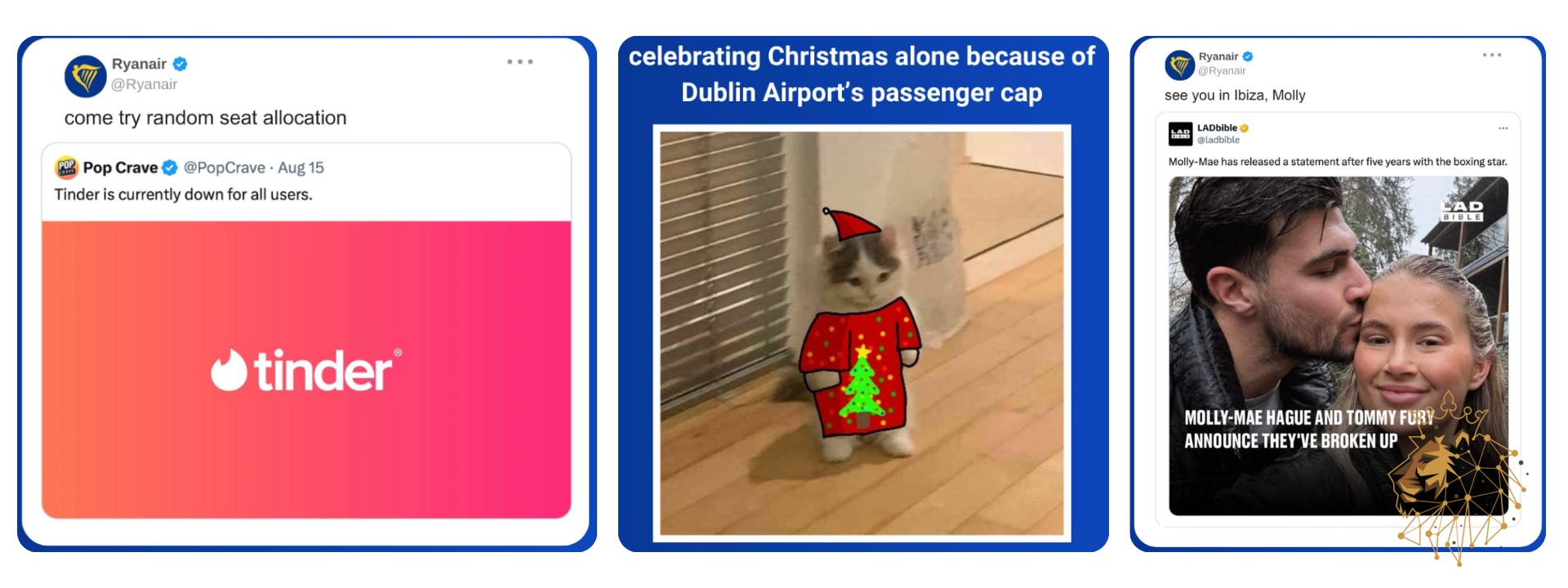Ryanair's genius cost-cutting tricks
How Ryanair outflies competitors with bold moves and cheap prices.
If there is only one key point you should take away from this article, it’s this:
Ryanair's unmatched cost-efficiency strategy, achieved through smart decisions and minimal marketing spend, keeps it far ahead of competitors like EasyJet and Wizz Air, making it the undisputed cost leader in European aviation.
Want to know more? Keep reading, then.
Ryanair is known for its ultra-low-cost carrier model. The company consistently undercuts competitors like EasyJet and Wizz Air on expenses (excl. fuel), maintaining its edge as the cost leader (by far!) in the European airline industry.
The nearest cost rival, Wizz, is 39% pricier per passenger, including fuel, in comparison to Ryanair itself (see Figure 1)
This advantage comes from making smart decisions that save money and using controversial publicity to make the brand more visible without spending too much money on marketing. Let’s take a look at the decisions Ryanair takes to become and maintain the absolute cost leader!
How? Well, let us tell you how!
1. Maximizing airport and handling efficiency
The airports Ryanair picks play a big part in cutting costs.
Why? By operating out of cheaper secondary airports, Ryanair avoids the higher fees associated with major hubs like Paris's Charles de Gaulle or London's Heathrow. EasyJet and Wizz Air fly from big and smaller airports.
For example, Ryanair uses airports on the outskirts of Paris, significantly lowering their landing and handling charges. You can see that clearly in the below example (Figure 2) of airports per airline in Paris.
2. Online check-ins
Ryanair also requires online check-in and cuts on unnecessary add-ons.
Why? This reduces the need for airport check-in counters and personnel. The airline also avoids the use of costly jet bridges by having passengers walk to their planes, further slashing ground operating expenses.
3. Ownership and maintenance advantages
Ryanair also leads in ownership and maintenance expenses. The airline benefits from bulk purchasing of its uniform fleet of Boeing 737 aircraft, which allows for negotiating strength and simplifies maintenance.
Unlike easyJet and Wizz Air, which lease a significant portion of their fleets (70% and nearly 90%, respectively), Ryanair owns all its planes. This ownership model avoids lease costs and provides greater control over maintenance scheduling and costs, enhancing operational efficiency and cost containment.
4. Strategic personnel and marketing costs
Ryanair spends approximately €8 per passenger on personnel, matching Wizz Air and outperforming EasyJet, which spends €13.
How? This cost efficiency is attributed not just to lean operations, but also to Ryanair's unique approach to marketing. CEO Michael O’Leary is historically known for its controversial statements and publicity stunts, like proposing pay toilets on flights or standing-room-only tickets. These kinds of comments keep Ryanair in the media spotlight, garnering free publicity that other airlines would pay millions for in advertising.
Adapting to the digital age, Ryanair has created viral, self-satisfying memes that resonate with a budget-conscious audience, further reducing the need for traditional, costly promotion efforts. EasyJet tends to hire expensive consultants for marketing strategies, adding to their overhead.
5. Competitive edge
When comparing Ryanair to full-service carriers like Lufthansa and Air France-KLM, which incur additional expenses to handle different passenger requirements, such as business-class amenities, lounges, and broader fleets, the cost gap gets even bigger. These airlines typically operate in major airports situated nearer to urban centers to attract business travelers, resulting in an increase in their expenses.
In our premium fundamental analysis of Ryanair, we will explore the genius capital allocation strategy of Ryanair and its future growth prospects.
Of course, we will also give our opinion about Ryanair's current valuations.




![100+] Ryanair Wallpapers | Wallpapers.com 100+] Ryanair Wallpapers | Wallpapers.com](https://substackcdn.com/image/fetch/$s_!OhN2!,w_1456,c_limit,f_auto,q_auto:good,fl_progressive:steep/https%3A%2F%2Fsubstack-post-media.s3.amazonaws.com%2Fpublic%2Fimages%2F9e58253d-afa6-4b40-ab08-aab251862930_1920x768.jpeg)


